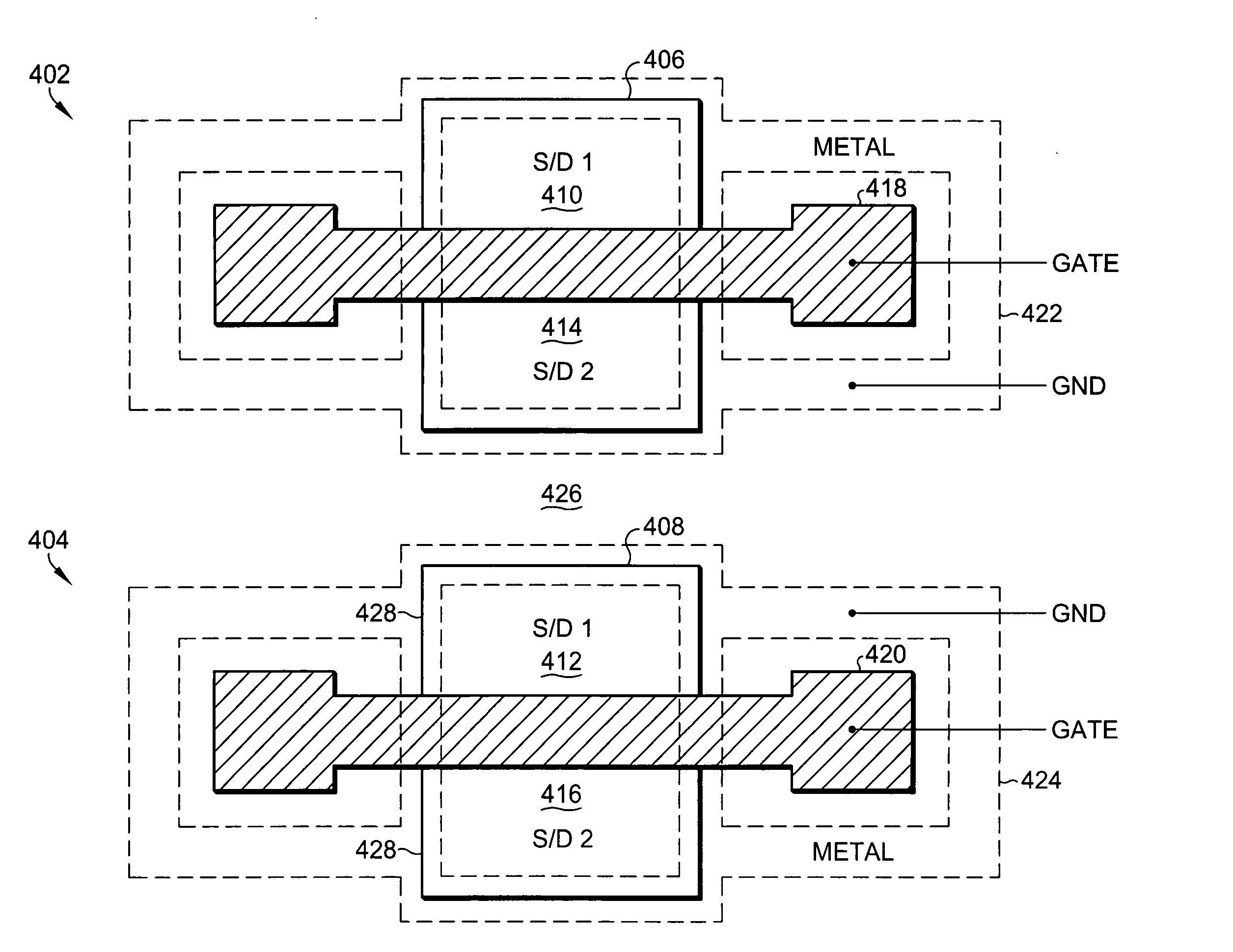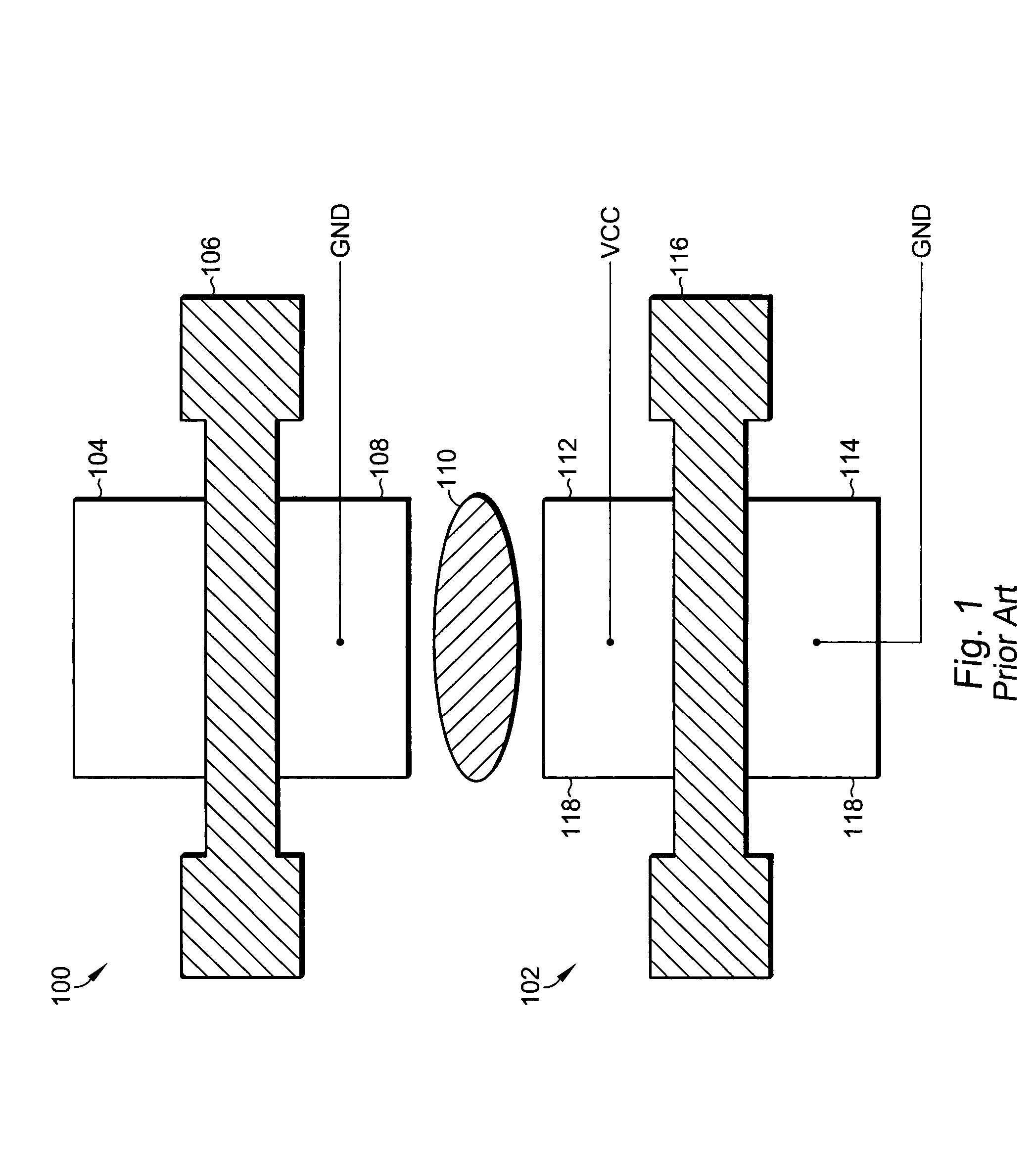Total ionizing dose suppression transistor architecture
- Summary
- Abstract
- Description
- Claims
- Application Information
AI Technical Summary
Benefits of technology
Problems solved by technology
Method used
Image
Examples
Embodiment Construction
[0033] Referring now to FIG. 4, a plan view of two radiation-hardened N-channel transistors 402 and 404 is shown according to an embodiment of the present invention. A first N-channel radiation-hardened transistor 402 includes an active region 406 surrounded by thick oxide, a polysilicon or metal gate 418 crossing the active region 406, defining first and second source / drain regions 410 and 414. A metal region 422 is coupled to ground and overlaps the boundary of the active region 406, and completely surrounds each of the ends of the gate 418 that extends beyond the border of the active region 406. A second N-channel radiation-hardened transistor 404 includes an active region 408 surrounded by thick oxide, a polysilicon or metal gate 420 crossing the active region 408, defining first and second source / drain regions 412 and 416. A metal region 424 is coupled to ground and overlaps the boundary of the active region 408, and completely surrounds each of the ends of the gate 420 that ex...
PUM
 Login to View More
Login to View More Abstract
Description
Claims
Application Information
 Login to View More
Login to View More - R&D
- Intellectual Property
- Life Sciences
- Materials
- Tech Scout
- Unparalleled Data Quality
- Higher Quality Content
- 60% Fewer Hallucinations
Browse by: Latest US Patents, China's latest patents, Technical Efficacy Thesaurus, Application Domain, Technology Topic, Popular Technical Reports.
© 2025 PatSnap. All rights reserved.Legal|Privacy policy|Modern Slavery Act Transparency Statement|Sitemap|About US| Contact US: help@patsnap.com



